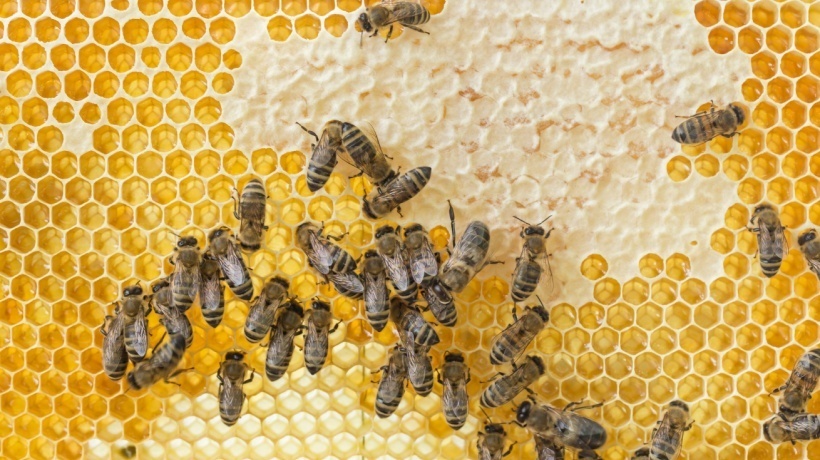How Do Bees Inspire Educational Strategies?
It's almost mesmerizing to look at how bees buzz around and do one of the most important things on our planet. Bee behavior and how the hive mind works are often set as examples of teamwork and communication; this is why they serve as lessons. Bees are social insects, with each hive having its own organized colony consisting of a queen, drones, and worker bees. These networks have clear roles and communication rules that can teach us a thing or two about how to get things done effectively.
But why is bee behavior so important to understand, especially in the educational realm? Well, these busy tiny workers can help you design and apply effective educational strategies by studying their ways of communicating and working. You can inspect their honeybee social structure, communication methods, and chemical signals to keep the beehive connected and become inspired to create better learning experiences for your students. So, without further ado, let's explore the ways you can integrate bee behavior into your teaching strategies.
4 Bee-Centric Teaching Ideas
1. Teach Complex Concepts
You can use bee behavior to teach complex concepts in a way that students can easily comprehend. Communication, social structures, and decision making can be overwhelming to learn, especially for younger students. But by studying how bees live and work, you can make it simple and fun. First, teach your students how bees dance to communicate and how they convey messages about direction or location. Then, talk about a bee colony's social structure to explore concepts like specialization, responsibility, accountability, teamwork, and hierarchy. Lastly, discuss the bees' decision-making abilities and how they strategically make choices based on factors such as the weather and even other bees' feedback.
2. Provide Holistic Learning
Studying bees can offer knowledge across many subjects, like biology, mathematics, communication, and many others. Your students don't just learn about honey and pollination but also combine creativity with science. They learn about biology by studying the bees' anatomy, and behavior and ecology through how they interact with plants. They can also explore math through the bees' precision and efficiency in locating resources, and let's not forget their own form of engineering with which they build their homes. When introducing your students to the fascinating world of these tiny workers, don't miss the chance to introduce them to different subjects.
3. Foster Creativity
Bees are sources of inspiration and creativity. First of all, they have their own code of communication: the famous waggle dance. Imagine the bees performing precise movements with their little bodies, almost like vibrations, to indicate to the other foragers where to find food. Now, as your students see this, they can try to find their own code to communicate with each other and demonstrate it in a group project. Similarly, they may start to wonder about how bees can build their hives in such perfect shapes and get inspired to create something from scratch using similar principles.
4. Raise Environmental Awareness
When students start learning about bees, they discover how crucial these little insects are. Bees play a significant role in helping plants reproduce by spreading pollen as they go from one flower to the other. But they are also up against some tough obstacles, like losing their homes and being harmed by pesticides. If bees disappear, soon enough we will experience the consequences. As students learn more about these issues, they start to care and might become advocates for protecting the environment. This is as important as any practical lesson you'll teach them.
Fun Activities To Mimic Bee Behavior
Communication Games
To really get into the bee spirit, encourage your students to participate in some role-playing games around communication. For instance, divide them into groups and have each team create their own waggle dance to communicate. Similarly, you can design interactive lessons and have students pretend to be bees, solving challenges by communicating like them.
Foraging Simulations
Again, students can become bees in a foraging simulation and sharpen their decision-making skills. They will have to find resources, and they will face challenges like deciding which flower to choose based on quality, distance, and other factors. In this way, students will learn about resource allocation and how to prioritize and adapt to changing circumstances.
Hive Construction Projects
Building hives is a creative project for students where they can let their imaginations run wild. They get to explore the intricate world of bee architecture and discover the beauty of patience with every little cell they create. After learning how bees make the most of their space and create a functional home, students can also develop problem-solving skills by brainstorming solutions and working together to overcome challenges like improving hive ventilation or creating a more bee-friendly layout.
Conclusion
Studying bees and applying their behavior to education goes beyond just honey and flowers. It offers a whole new perspective on learning, too. Whether your students are delving into social structures or sustainability, you're sparking curiosity, encouraging creativity, and promoting a stronger bond between them and the world around them. So, don't hesitate to celebrate World Bee Day and show your students how these small creatures have such a huge impact on the whole planet.

